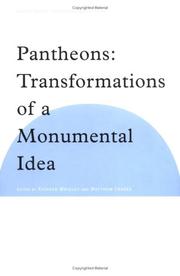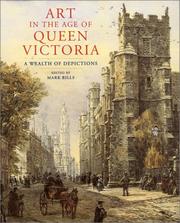| Listing 1 - 2 of 2 |
Sort by
|

ISBN: 0754608085 9780754608080 Year: 2004 Volume: *4 Publisher: Aldershot ; Burlington Ashgate
Abstract | Keywords | Export | Availability | Bookmark
 Loading...
Loading...Choose an application
- Reference Manager
- EndNote
- RefWorks (Direct export to RefWorks)
The institution of the pantheon has come a long way from its classical origins. Invented to describe a temple dedicated to many deities, the term later became so far removed from its original meaning, that by the twentieth century, it has been able to exist independently of any architectural and sculptural monument. This collection of essays is the first to trace the transformation of the monumental idea of the pantheon from its origins in Greek and Roman antiquity to its later appearance as a means of commemorating and enshrining the ideals of national identity and statehood. Illuminating the emergence of the pantheon in a range of different cultures and periods by exploring its different manifestations and implementations, the essays open new historical perspectives on the formation of national and civic identities.
Sculpture --- Historical monuments --- Monumenten --- Monumenten [Historische ] --- Monuments --- National monuments --- Monuments. --- Pantheon (Paris, France) --- Pantheon (Rome, Italy) --- -Memorials --- 72.032 --- 72.034 --- 72.035 --- 72.036 --- 726.1 --- Commemorations --- Historic sites --- Memorialization --- Architecture --- Memorials --- Public sculpture --- Statues --- Bouwstijlen van de Oudheid. Antieke bouwkunst --- Architectuur van de renaissance; barok; rococo en koloniale stijl --- Oude bouwstijlen in de 19e eeuw. Post-renaissance in de architectuur --- Moderne bouwkunst. Architectuur van de 20e eeuw --- Tempels. Pagoden. Niet-christelijke heiligdommen --- 726.1 Tempels. Pagoden. Niet-christelijke heiligdommen --- 72.036 Moderne bouwkunst. Architectuur van de 20e eeuw --- 72.035 Oude bouwstijlen in de 19e eeuw. Post-renaissance in de architectuur --- 72.034 Architectuur van de renaissance; barok; rococo en koloniale stijl --- 72.032 Bouwstijlen van de Oudheid. Antieke bouwkunst


ISBN: 0853318298 Year: 2001 Publisher: Bournemouth Russell-Cotes Art Gallery and Museum
Abstract | Keywords | Export | Availability | Bookmark
 Loading...
Loading...Choose an application
- Reference Manager
- EndNote
- RefWorks (Direct export to RefWorks)
| Listing 1 - 2 of 2 |
Sort by
|

 Search
Search Feedback
Feedback About UniCat
About UniCat  Help
Help News
News